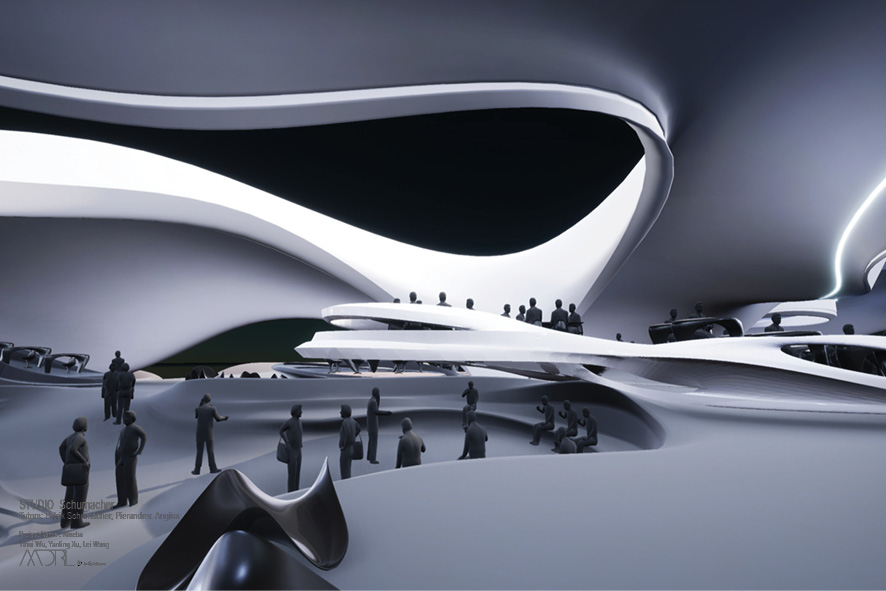Constructing agency 2016-2018
Ameda
Studio Patrik Schumacher
Tutor Pierandrea Angius
Team Yihui Wu (China) Yanling Xu(China) Lei Wang(China)
The activities in the society are the process of communication. It allows us to self-sort as
participants of various specific social interactions. Architecture, as the built environment, is the society's physical memory. The communicative capacity of architecture calls for the Semiological
Project: to design the architectural project as a system of signification.
We start our project by researching the visual language of Chinese Mask. There are three main parts in the Mask system. The overall style of a mask shows one's social status, color explain's personalities, and details such as the curvature of eyebrows imply one's mood.
Similar to Chinese Mask and other visual languages, the design of an architectural semiological system includes the spatial position, shape, morphology, materiality, color etc. Moreover, architectural system is complex in certain aspects such as construction. In our project, we designed our system on four parts: floor, furniture, lighting and ceiling. They are closely related with each other and all of them together imply the function, usage mode and spatial properties of exact areas. To be specifically, in our floor system, the plan form indicates the function of the space, color represents the usage mode, and various kinds of boundaries imply different spatial properties. All of these basic architectural communicative units work as the words in a sentence.
The rules to combine words together is grammar. We designed our grammar as interlock and overlap. Some parts of the floor will change in some circumstances to meet certain demand. Furniture will follow the change of the floor. Lexicon, syntax, and semantics develop together to guide our semiological design.
Users can get the information of each space from the semiological system. Their behavior will be guided to a certain extent. In the meantime, the system allows participants to interact with the system. The built environment will respond to users demand under the guidance of the semiological system.
















